If you're looking for the best antibiotic for skin abscess, it's important to understand that there is no single "best" option for everyone. Different factors can impact which antibiotic will be most effective, including the severity and location of the abscess, the patient's medical history and any underlying medical conditions, and other individual factors.
Before purchasing any product, readers should consider factors such as the prescribed dosage, method of administration, potential side effects, and interactions with other medications. It's also important to follow all instructions and finish the entire course of antibiotics, even if symptoms improve before the prescription is completed.
If you've had recurring skin abscesses or are struggling with a particularly severe one, you may be wondering how to prevent them from coming back. Certain lifestyle changes, such as maintaining good hygiene practices and boosting your immune system, may help to reduce the risk of future abscesses. It's also important to consult with a healthcare provider to determine any underlying conditions that may be contributing to the problem.
Do you struggle with recurring skin abscesses and are looking for effective treatment options? Or perhaps you're simply curious about the best ways to prevent them from occurring in the first place? Whatever your situation, taking the time to educate yourself about different antibiotics and lifestyle changes can help you make informed decisions and improve your overall health and well-being.
10 Best Antibiotic For Skin Abscess
| # | Product Image | Product Name | Product Notes | Check Price |
|---|---|---|---|---|
|
1
|
It is ideal for preventing and treating infections on wounds, cuts, and burns.
|
|
||
|
2
|
This product is ideal for fast healing and protection against infection for bed sores, pressure sores, diabetic wounds, ulcers, cuts, scrapes, and burns.
|
|
||
|
3
|
This product is ideal for protecting and caring for wounds and preventing infections.
|
|
||
|
4
|
It is an antibiotic ointment intended for use during first aid treatment of minor cuts, burns and infections.
|
|
||
|
5
|
Preventing infection in minor wounds.
|
|
||
|
6
|
The product is ideal for protecting against infections and aiding in wound care.
|
|
||
|
7
|
Ideal for treating minor cuts, diaper rashes, and first-degree burns.
|
|
||
|
8
|
It is ideal for treating and preventing infections in minor cuts, wounds, and burns.
|
|
||
|
9
|
It is ideal for treating minor wounds such as cuts, scrapes, and burns with single-use antibiotic ointment packets.
|
|
||
|
10
|
This product is ideal for soothing painful cuts, scrapes, and burns while also preventing infection.
|
|
1. Triple Antibiotic-144-0.5 Gram Packet Box
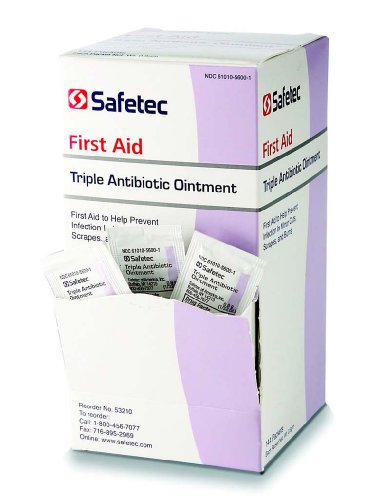
The Triple Antibiotic Ointment comes in packets of 0.9 grams each, making it a convenient and easy solution for first aid kits, cars, purses, and backpacks. This ointment promotes the regeneration and healing of skin cells, making it an effective treatment for minor cuts, scrapes, and burns. Additionally, it helps prevent infections from occurring in these injuries.
These packets are perfect for those who are always on-the-go, as they are small and can be easily stored in any location. The ointment's formula is designed to aid in the healing process by providing a protective barrier to the affected area. This barrier helps to keep the wound clean and free from bacteria, thus speeding up the healing process.
The Triple Antibiotic Ointment is an essential addition to any first aid kit and can be used by anyone, regardless of age or skin type. It contains a powerful formula that includes three active ingredients, making it a reliable solution for various minor injuries. The ointment is easy to apply, and the packets ensure that the product remains sterile and effective until opened.
2. Rapid Care Wound And Bandage Kit
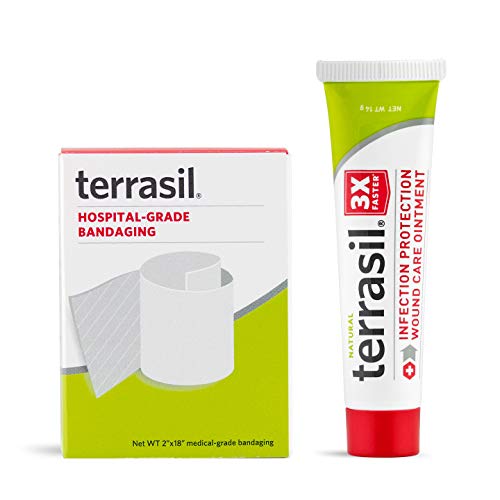
This innovative skincare cream is designed to help speed up the healing process of various skin issues. With its advanced formula, it's three times faster than leading skincare creams, ensuring faster recovery times for those suffering from wounds, ulcers, and sores.
The cream is specially formulated to prevent infection, promoting natural healing without any complications. In as little as one to seven days, users can see significant improvements in their skin condition.
Backed by over 15 years of research, this cream is trusted by top physicians for its effectiveness in killing bacteria and speeding up the recovery process. It's an excellent solution for cuts, scrapes, minor burns, wounds, fissures, boils, pressure sores, diabetic wounds, ulcers, bedsores, foot and leg sores, as well as skin abscesses.
The cream is easy to apply and absorbs quickly into the skin, leaving no residue or sticky feeling. It's gentle on the skin and does not cause any irritation or discomfort.
3. Polysporin Antibiotic Ointment: Travel Size Wound Care
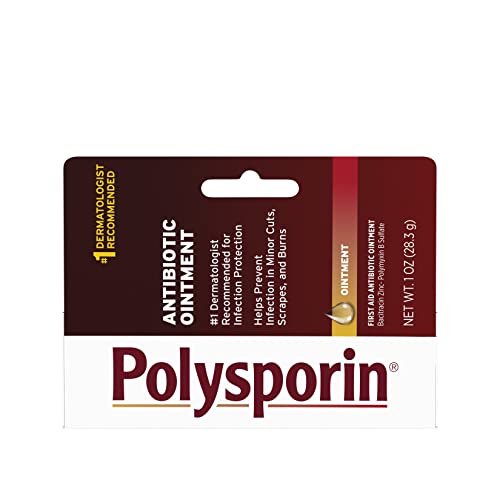
If you're looking for an effective way to care for minor cuts, scrapes, and burns, the Polysporin First Aid Antibiotic Skin Ointment is a great option. This 1-ounce tube of topical antibiotic ointment is specially formulated to prevent infections from minor wounds.
As the #1 dermatologist-recommended first aid ointment for infection prevention, this unique neomycin-free formula combines the antibiotic power of bacitracin zinc with polymyxin B sulfate. This combination helps to fight off infections and promotes healing of the affected area.
To use, simply apply a small amount of the ointment to the affected area 1 to 3 times per day, then cover with a sterile bandage. This will help to keep the wound clean and protected as it heals. With a convenient TSA-friendly travel size, this ointment is perfect for on-the-go wound care, and it also makes a great addition to any home first aid kit.
4. Polysporin First Aid Antibiotic Ointment, 0.5 Oz (Pack Of 5)
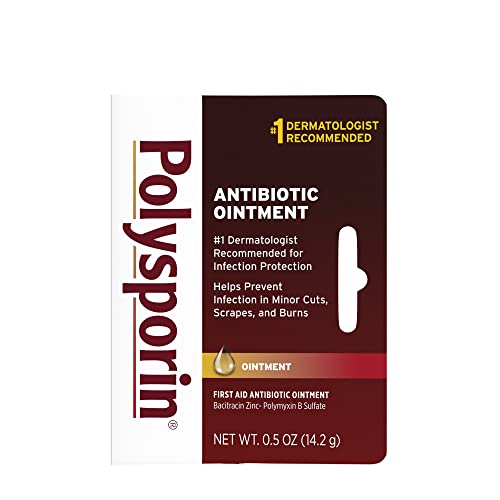
This topical antiseptic is an essential addition to any first aid kit or wound care supplies. Its infection-fighting ingredients, a powerful combination of bacitracin zinc and polymyxin B sulfate, work together to help prevent infection in minor cuts, scrapes, and burns.
What sets this first aid ointment apart is its unique formula that is neomycin-free, making it a safe and effective option for those with neomycin allergies. Its effectiveness in providing infection protection is unmatched, giving users peace of mind during the healing process.
This product is also travel size friendly, making it a convenient and portable option for on-the-go first aid and wound care. Its compact size allows users to bring it with them wherever they go, ensuring that they are always prepared for any mishaps.
5. Neosporin Original Antibiotic Ointment, 24-Hour Infection Prevention For Minor Wound.5 Oz
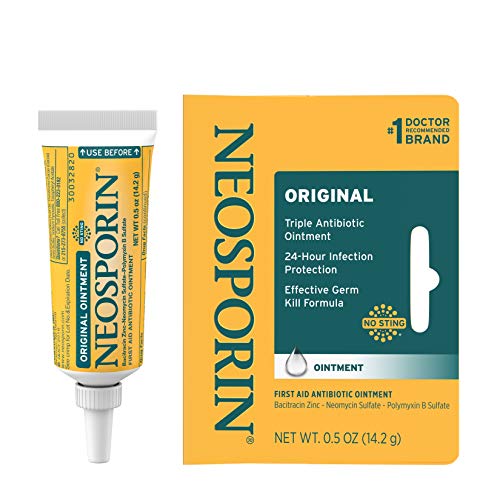
The Neosporin Original Topical Antibiotic Ointment is an effective solution for treating minor cuts, scrapes, and burns. This product comes in a 0.5-ounce tube, making it convenient to carry around for immediate use.
The antibiotic ointment contains three active ingredients: neomycin sulfate, bacitracin zinc, and polymyxin B. These ingredients work together to provide 24-hour protection against infection for minor wounds. The ointment also contains HeliDerm Technology, which creates a nourishing environment for the skin to heal, resulting in healthier-looking skin after use.
In addition to its infection-fighting properties, the Neosporin Original Topical Antibiotic Ointment also nourishes the skin to minimize the appearance of scars after healing. Its unique formula helps to soothe and protect the affected area, making it an essential item for any first-aid kit.
To use, simply apply a small amount of the ointment to the affected area 1 to 3 times daily. For extra protection, cover the wound with a Band-Aid Brand Adhesive Bandage.
6. Globe Antibiotic Ointment: Double Protection For Wounds.
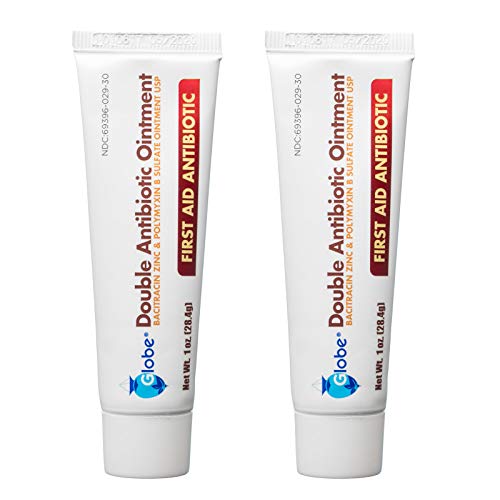
The Globe Double Antibiotic Ointment is a reliable solution for individuals who are in need of infection protection for minor cuts, scrapes, and burns. It is a skin care treatment that helps soothe painful wounds while preventing infection, ensuring 100% protection. This ointment is a must-have product in any first aid kit, providing first-class treatment for minor cuts, scars, eczema, scrapes, and burns.
The convenience of Globe's Double Antibiotic Ointment is that it comes in a 4-tube value pack that is easy to take with you wherever you go. You can keep it in your medicine closet, car, camping bag, purse, kitchen drawer, kid's backpack, and even your travel carryon luggage. The tube size is perfect for portability and ease of use.
The Globe Double Antibiotic Ointment is made with high-quality ingredients that include Bacitracin plus Polymyxin B for maximum infection protection. It contains 2 ounces of ointment and does not contain Neomycin, making it an excellent option for individuals with allergies to Neomycin.
This ointment is manufactured in accordance with the highest pharmaceutical manufacturing processes and contains a NDC for 100% confidence. It is produced by Trifecta Pharmaceuticals USA, the manufacturer of the Globe Brand, based in sunny Fort Lauderdale, Florida.
7. Healing Zinc Ointment For Cuts And Burns
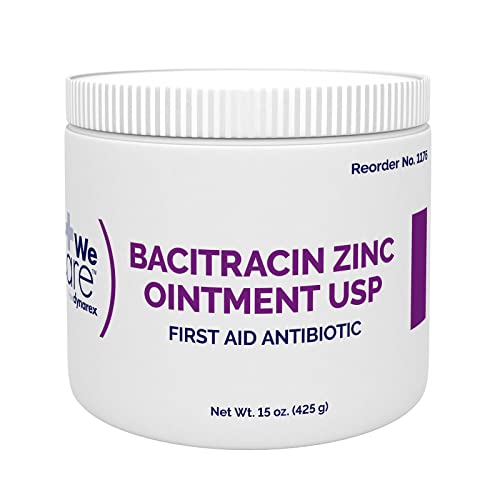
This wound care ointment is a powerful solution for minor cuts, burns, and scrapes that may help minimize the risk of complications. The active ingredient in this ointment is bacitracin zinc, which is known for its effectiveness in treating wounds.
Apart from its wound-healing capabilities, this ointment may also support natural recovery. Its zinc content is an essential mineral that helps support the body's natural immune response and tissue repair.
This wound care ointment is available in different quantities to cater to your needs. Choose from the 0.9g single-use medicine packet, 15oz. jar, 0.5oz tube, 1oz. tube, and 4oz tube, whichever suits you best.
It is a must-have item for your medicine cabinet as it is practical for use at home, company clinics, gyms, and school clinics. Be prepared for any emergency by having this bacitracin zinc ointment in your medical kit.
Rest assured that this topical wound ointment is of high quality as it is USP verified. It is carefully manufactured to meet all of the indicators for quality, identity, potency, purity, and performance set by the United States Pharmacopeia.
8. Polysporin First Aid Antibiotic Ointment -1 Oz, Pack Of 3
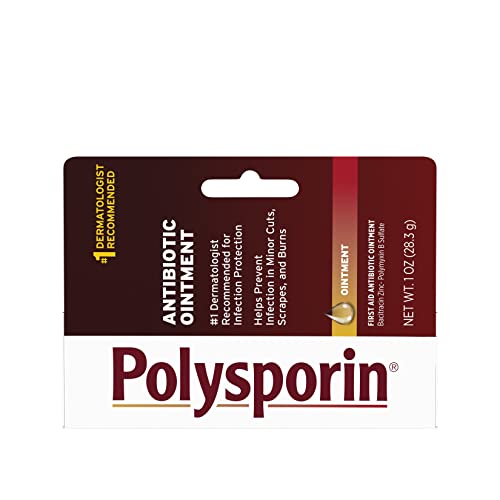
The Polysporin First Aid Antibiotic Ointment is a top-of-the-line solution for minor wound care. Its unique formula combines the bacteria-fighting capabilities of bacitracin zinc and polymyxin B sulfate without neomycin. This topical ointment effectively prevents infection in minor cuts, scrapes, and burns.
The ointment is easy to use. Simply apply a small amount to the affected area 1 to 3 times daily. It is available in a convenient TSA-friendly travel size, making it easy to carry with you wherever you go.
This first aid ointment is recommended by dermatologists as the #1 choice for infection prevention. It comes in a pack of three 0.5-ounce tubes, providing ample supply for minor wound care needs.
In case of accidental ingestion, it is advised to seek medical help or contact a Poison Control Center immediately.
9. Triple Care For Wounds – Dynarex Antibiotic Packets
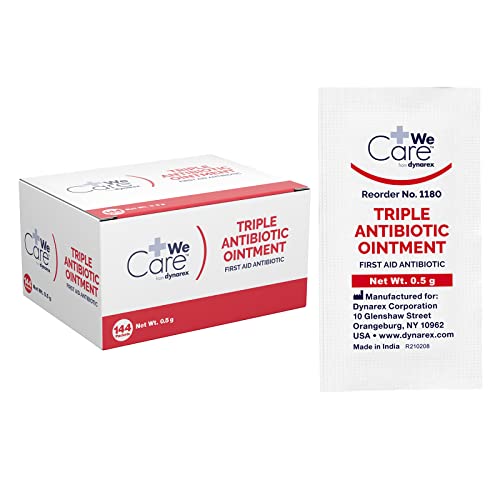
The Dynarex Triple Antibiotic Ointment is a reliable solution for protecting minor external injuries. Its efficient antibiotic combination of Bacitracin Zinc, Neomycin Sulfate, and Polymyxin B Sulfate offers ultimate efficacy in reducing the growth of harmful organisms in the body and promoting healing.
This triple antibiotic cream is ideal for minor cuts, scrapes, and burns. It is a must-have for first aid kits in hospitals, long-term care facilities, homecare settings, and more.
Designed to keep wounds clean and promote skin healing, this first-aid antibiotic ointment also nourishes the skin for a healthier look and feel after use.
The Dynarex Triple Antibiotic Ointment is conveniently available in single-use cream packets of 0.5g each. Each box contains 144 packets that can supply first aid kits in medical facilities, schools, and homes.
10. Triple Relief: Antibacterial Ointment With Pain Soother
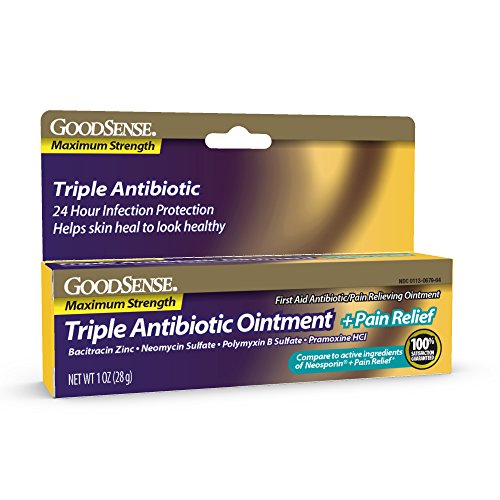
GoodSense Triple Antibiotic Ointment is a reliable solution for minor cuts, scrapes, and burns that helps prevent infection and relieves pain. This ointment is comparable to Neosporin + Pain Relief in terms of active ingredients with Bacitracin Zinc, Neomycin Sulfate, Polymyxin B Sulfate, and Pramoxine HCl.
To use, adults and children 2 years of age and older should clean the affected area and apply a small amount of the ointment (equal to the surface area of the tip of a finger) on the area 1 to 3 times daily. If needed, it may be covered with a sterile bandage. For children under 2 years of age, it is important to consult a doctor before use.
Injury is a general term used to describe harm caused by accidents, falls, hits, weapons, and more. These injuries can happen at work or play, indoors or outdoors. GoodSense Triple Antibiotic Ointment is a maximum strength solution that can help alleviate the pain associated with these injuries, while also working to prevent infection.
Best Antibiotic For Skin Abscess FAQs
Are there any natural remedies for skin abscesses instead of antibiotics?
Yes, there are some natural remedies for skin abscesses that can help alleviate symptoms and promote healing without the need for antibiotics. One effective remedy is tea tree oil, which has antibacterial and anti-inflammatory properties. Applying diluted tea tree oil directly to the abscess can help reduce swelling and prevent the spread of infection. Another natural remedy is turmeric, which contains curcumin, a compound with powerful anti-inflammatory and antimicrobial properties. Mixing turmeric powder with water or coconut oil to make a paste and applying it to the abscess can help soothe pain and promote healing. Additionally, applying a warm compress to the abscess for 10-15 minutes several times a day can help reduce swelling and promote drainage. It's important to note that while these natural remedies can be effective, they may not work for everyone and it's important to consult with a healthcare professional if the abscess does not improve or gets worse.
Can antibiotics alone cure a large skin abscess or is surgery necessary?
The treatment of a large skin abscess depends on several factors such as the size and severity of the abscess, the location, and the overall health of the patient. In some cases, antibiotics alone may be effective in treating a skin abscess. However, if the abscess is large, surgery may be necessary to drain the pus and remove the infected tissue. Antibiotics alone may not be able to penetrate the abscess and reach the site of infection.
In addition, delaying or avoiding surgery may lead to the spread of infection to other parts of the body. Surgery is typically recommended for abscesses that are larger than 1 cm in size, or those that are located in areas that are difficult to drain using antibiotics alone. It is important to consult a healthcare professional to determine the best course of treatment for a skin abscess. They may recommend a combination of antibiotics and surgery to effectively treat the infection and prevent further complications.
Can topical antibiotics be used for treating skin abscesses?
Yes, topical antibiotics can be used for treating skin abscesses, but it depends on the severity of the abscess. Topical antibiotics are effective for treating mild skin infections caused by bacteria, including some small abscesses. The antibiotics in topical creams or ointments work by killing bacteria on the skin surface and preventing them from multiplying. However, if the abscess is large or has spread deeper into the skin, oral antibiotics are usually required for effective treatment. In some cases, a healthcare provider may also need to make an incision and drain the abscess. It is important to note that topical antibiotics should only be used as directed by a healthcare provider and should not be used for more than a few days without medical supervision. If left untreated, skin abscesses can lead to serious complications, so it is important to seek medical attention if you suspect you have an abscess.
How can doctors determine the best antibiotic for a specific skin abscess?
Doctors determine the best antibiotic for a specific skin abscess by considering several factors such as the severity of the abscess, the location of the abscess, the patient's medical history, and the results of any lab tests. Typically, doctors will perform a physical examination of the abscess to determine its severity and location. They may also order blood tests and a culture of the abscess to identify the type of bacteria causing the infection. Once the bacteria are identified, doctors can choose the appropriate antibiotic to treat the infection. The choice of antibiotic depends on the sensitivity of the bacteria to different antibiotics, the patient's medical history, and any known allergies or adverse reactions to certain antibiotics. In some cases, doctors may also consider factors such as the patient's age and overall health when selecting an antibiotic. It's important to note that antibiotics should only be prescribed by a licensed healthcare professional and should be taken exactly as prescribed to ensure their effectiveness and minimize the risk of antibiotic resistance.
How long should you take antibiotics for a skin abscess?
The duration of antibiotics for a skin abscess depends on various factors such as the severity of the infection, the type of bacteria causing it, and the individual's overall health condition. In general, most skin abscesses can be treated with a seven to ten-day course of antibiotics. However, some severe cases may require a longer treatment course.
It is crucial to complete the full course of antibiotics as prescribed by the doctor, even if the symptoms have improved or disappeared. Stopping antibiotics prematurely may result in the recurrence of the infection, the development of antibiotic resistance, or the formation of new abscesses.
It is also essential to practice good hygiene, keep the affected area clean and dry, and avoid squeezing or popping the abscess to prevent the spread of infection. In case of any concerns or complications, it is always recommended to consult a healthcare provider for appropriate diagnosis and treatment.
How quickly should antibiotics start working for a skin abscess?
The effectiveness of antibiotics for a skin abscess can vary depending on the severity of the infection. Generally, antibiotics should start working within 48-72 hours of taking them. However, it's important to note that antibiotics alone may not be sufficient to treat a skin abscess. In some cases, the abscess may need to be drained in order to fully resolve the infection.
If the abscess is small and not causing significant pain or discomfort, it may be possible to treat it with antibiotics alone. In this case, the antibiotics should start working within a few days and the abscess should begin to shrink and heal. However, if the abscess is large or causing significant pain and swelling, it may require drainage in addition to antibiotics.
It's important to follow the full course of antibiotics prescribed by your doctor, even if you start feeling better before the medication is finished. This will help ensure that the infection is fully eradicated and reduce the risk of the infection recurring. If you have concerns about the effectiveness of your antibiotics or the progress of your healing, it's important to speak with your healthcare provider.
Is penicillin usually prescribed for skin abscesses?
Yes, penicillin is a commonly prescribed antibiotic for skin abscesses. Skin abscesses are caused by bacterial infections, and penicillin is effective against many types of bacteria, including those that commonly cause skin infections. However, the choice of antibiotic may vary based on the severity of the infection and the type of bacteria causing the abscess. In some cases, a healthcare provider may prescribe a different type of antibiotic or a combination of antibiotics. It is important to follow the prescribed treatment course and complete the full course of antibiotics to ensure the infection is completely treated and to prevent antibiotic resistance. Additionally, it is important to seek medical attention if the abscess does not improve or if there are signs of spreading infection, such as fever or red streaks around the affected area.
What are the side effects of antibiotics for skin abscesses?
Antibiotics are commonly used to treat skin abscesses caused by bacterial infections. While they can be effective in fighting the infection, antibiotics may also come with certain side effects. The most common side effects of antibiotics for skin abscesses include nausea, vomiting, and diarrhea. Some people may also experience allergic reactions to antibiotics, which can cause symptoms such as itching, hives, and difficulty breathing. Long-term use of antibiotics can also disrupt the balance of good bacteria in the gut, leading to conditions such as thrush or Clostridium difficile infection. Additionally, antibiotics can sometimes interact with other medications, so it is important to inform your healthcare provider of any other medications you are taking. It is important to take antibiotics exactly as prescribed and to complete the entire course of treatment, even if symptoms improve, to avoid the development of antibiotic-resistant bacteria. If you experience any concerning side effects, contact your healthcare provider immediately.
What is the most effective antibiotic for treating skin abscesses?
The most effective antibiotic for treating skin abscesses depends on several factors, including the severity of the infection, the patient's medical history, and the specific bacteria causing the abscess. In general, the first-line treatment for uncomplicated skin abscesses is usually incision and drainage, which can help remove the pus and alleviate symptoms. However, antibiotics may be prescribed in certain cases, such as for larger abscesses or those that are accompanied by fever or other systemic symptoms. Commonly prescribed antibiotics for skin abscesses include penicillin, amoxicillin-clavulanate, and cephalosporins. In cases where the abscess is caused by methicillin-resistant Staphylococcus aureus (MRSA), which is a type of bacteria that is resistant to many antibiotics, alternative antibiotics such as clindamycin or trimethoprim-sulfamethoxazole may be used. It's important to follow your healthcare provider's instructions carefully when taking antibiotics and to complete the full course of treatment to ensure that the infection is fully resolved.
What should you do if your skin abscess does not respond to antibiotics?
If your skin abscess does not respond to antibiotics, it is essential to seek medical attention immediately. An abscess is a collection of pus, which is a sign of an infection. When antibiotics are unable to clear an infection, it is an indication that the bacteria causing the infection may be resistant to the antibiotics prescribed. In such a situation, a healthcare professional may need to drain the abscess to remove the pus and bacteria causing the infection.
To treat an abscess that is not responding to antibiotics, the healthcare provider may need to perform a minor surgical procedure to drain the pus from the abscess. The procedure involves making a small incision in the abscess to allow the pus to drain out, which can help alleviate symptoms such as pain, swelling, and inflammation.
In some cases, the healthcare provider may need to culture the pus to determine the specific type of bacteria causing the infection. Based on the culture results, the healthcare provider may prescribe a different antibiotic or a combination of antibiotics to treat the infection effectively.
It is important to follow the healthcare provider's instructions closely and complete the entire course of antibiotics as prescribed, even if symptoms improve. Failure to complete the prescribed antibiotics can lead to antibiotic resistance and recurrent infections.
